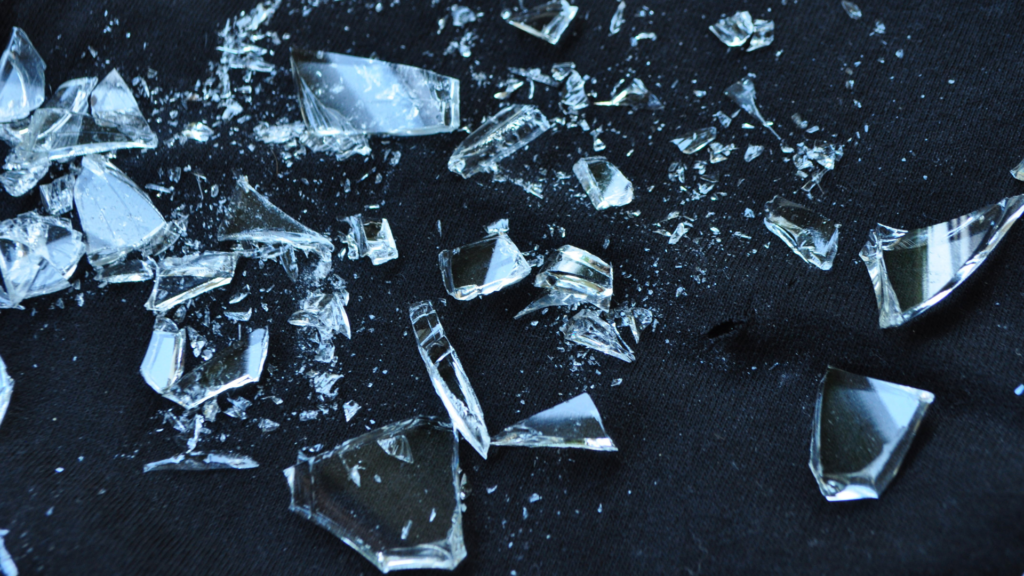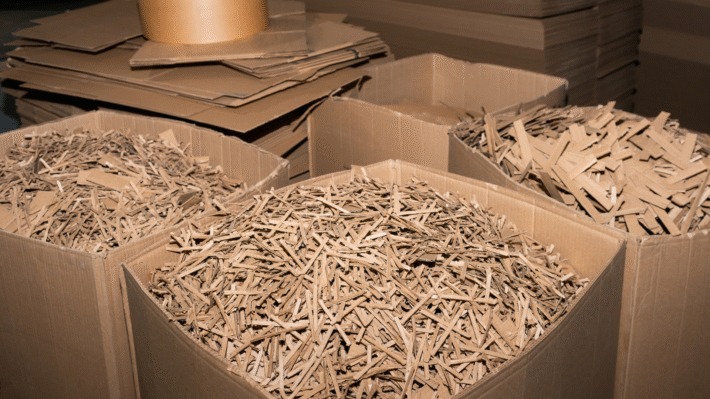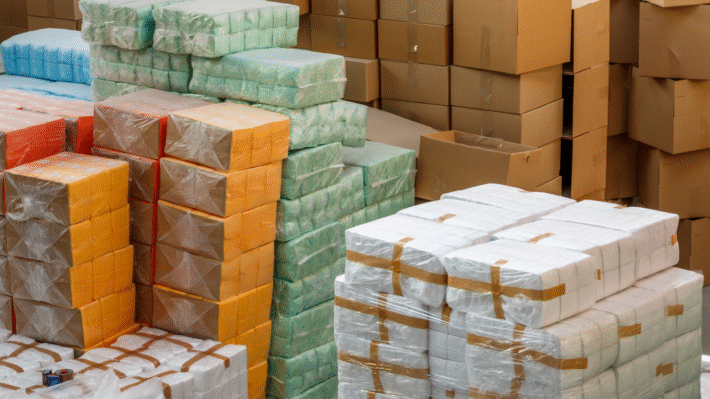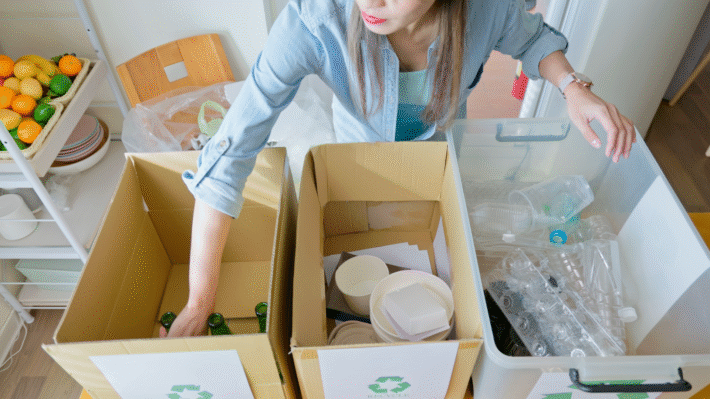Unlock the Power of Glass Recycling for a Greener and Cost-Effective Future

Glass Recycling! The words themselves paint a picture of an environmentally-friendly loop, a cycle of reinvention, that can transform waste into wonderful new products! This intriguing process doesn’t just reduce our need for raw materials; it actively battles against energy-intensive glass production. But what does glass recycling really entail and why is it so important for us and our planet? In this refreshing dive into the world of glass recycling, we will explore everything from its origins to its immense environmental and economic benefits, along with the innovative techniques used in today’s smart recycling chains! So, brace up and let’s embark on this green journey, right here, right now!
Importance of Glass Recycling
Glass recycling is something that we should all take seriously. It’s not just because it helps create that beautiful green hue in your favorite beer bottles. It is much more than that. In fact, it plays a vital role in preserving the planet for future generations. Let’s explore why.
Reducing the Need for Raw Materials
Our Earth has a limited supply of natural resources. Each time we opt for brand new products made from virgin materials, we further deplete these precious reserves. However, with glass recycling, we have a golden opportunity to make a real difference.
Conserving Natural Resources
Recycling glass primarily involves reprocessing waste glass into usable products. Not a fan of rocket science, right? But here’s the kicker – recycling a single glass bottle saves enough energy to power a computer for 25 minutes or a 100-watt light bulb for 4 hours! Plus, every ton of glass that gets recycled prevents the extraction of 1.2 tons of raw materials. This results in a significant conservation of natural resources such as sand, limestone, and soda ash required to manufacture new glass.
This conservation of raw materials isn’t just about quantity. It’s also about quality! Reusing glass preserves the purity and integrity of the material, aiding in the production of high-quality glass products. Isn’t that amazing?
Saving Energy in Production
The benefits aren’t confined to resource conservation. They extend to energy savings as well! Yes, that’s right. Melting recycled glass, also known as cullet, requires much less energy than creating new glass from raw materials. As simple as it sounds, this energy efficiency can lead to substantial savings in industrial production costs. It also means fewer greenhouse gases being emitted into our atmosphere. Speaking of which…
Environmental Benefits
From your morning orange juice to the pasta sauce for dinner, your day probably involves a lot of glass containers. But what happens to them afterward? Unfortunately, without recycling, they’d likely end up in landfills. And that’s bad news for Mama Earth.
Reducing Landfill Waste
Glass takes a really long time to decompose. We’re talking about 1 million years or more! By recycling, we’re not only resolving the immediate problem of waste disposal, but also eliminating the risk of future environmental degradation.
Since glass can be recycled indefinitely without losing purity or quality, it should never have to go to a landfill. By choosing to recycle our glass waste, we’re contributing to a significant reduction in landfill space.
Decreasing Carbon Emissions
Along with slowing down the fill rate of landfills, recycling glass helps reduce CO2 emissions. Because cullet melts at a lower temperature, less energy is required, so fewer fossil fuels are burned. This results in lower emissions of harmful carbon dioxide.
So, the next time you finish that jar of pickles, think twice before tossing it in the trash. Recycling your glass jars might seem like a minor action, but it can make a major difference. It’s just a simple step towards preserving our environment and reducing our need for raw materials. And isn’t that worth the effort?
Glass Recycling Process
Imagine for a moment, a world where we can recycle everything, where nothing goes to waste. Now, snap back to reality. We’re not quite there yet, but the good news is, when it comes to glass, we’re pretty close! Glass is one of those incredible materials that can be recycled indefinitely, and the process is simpler than you think. So, let’s dig into the nuts and bolts of how we turn old glass products into shiny new ones.
Collection Methods
Our recycled glass journey begins with collection. Once we’ve finished that last swig of soda or bottled pasta sauce, the used glass becomes what we call “post-consumer” material. So, how do we get it into the recycling system?
Curbside Collection
Want to recycle your glass from the comfort of your own home? No problem! In many places, all you’ve got to do is pop your empty glass items into a separate recycling bin. Then, on a set schedule, your local waste management company will swing by and pick up your bin straight from your curb. It’s as easy as taking out the trash!
Drop-Off Centers
In some areas, curbside pickup might not be an option. But don’t fret! There’s likely a drop-off center near you where you can bring your glass recyclables. Check your local recycling center’s rules, though, as some require you to sort your recyclables by color.
Processing and Manufacturing
Ok, we’ve gathered up all those used glass items. But a pile of empty pasta sauce jars isn’t exactly a shiny new bottle, right? So, let’s peek into where the real magic happens: processing and manufacturing.
Sorting and Cleaning
First stop: sorting. Here, glass pieces are divided by color — clear, green, and brown. Why? Different colors of glass can’t mix, or the end product will get discolored. Once the glass is sorted, it’s cleaned to remove any dirt, food debris, or non-glass material that sneaked in.
Crushing and Melting
Those colorful stacks of glass? Now, they’re crushed into a product called cullet. This crushed glass gets heated to tremendous temperatures in a furnace until it melts into a goopy, fiery-hot liquid. The molten glass is shaped into new containers, allowed to cool, and voila! We’ve turned old glass into new in a closed-loop system. Eco-friendly and energy-efficient — it’s a win-win!
So there you have it. The life-cycle of a glass bottle, from enjoying its contents to returning it, reborn and ready to be filled with something new. A truly fantastic voyage, don’t you think? Through our small conscious efforts and an impressive recycling process, we keep glass out of landfills and give new life to old containers. Now, isn’t that a story worth raising a (recycled) glass to?
Benefits of Glass Recycling
In our quest for sustainability, it’s challenging to find a better poster child than glass recycling. This champion of the circular economy wraps economic possibilities, energy efficiency, and waste reduction into one neat, infinitely recyclable package.
Economic Advantages
The economic benefits of glass recycling cannot be overstated. There are two key areas where this becomes evident: job creation and cost reduction.
Creating Jobs
Firstly, the process of collecting, sorting, and processing recycled glass can create a wealth of new jobs in communities. This isn’t a small-scale thing either: the recycling industry at large supported around 757,000 jobs in the U.S. in 2016. When a community embraces recycling, everyone can reap the benefits with more job opportunities and a strengthened local economy.
Reducing Costs
Besides, the production costs for recycled glass items can be notably lower than products created from virgin materials. This, in turn, means cheaper prices for consumers too. Imagine the savings if every glass manufacturer switched from virgin to recycled ingredients!
Energy and Waste Reduction
Glass recycling also packs a serious punch in the realms of energy savings and waste reduction.
Lowering Energy Consumption
Melting down used glass, or ‘cullet’ as it’s known in the industry, takes less heat than creating new glass from raw materials. According to the Glass Packaging Institute, every ton of glass that’s recycled saves over nine gallons of the fuel oil needed to create glass from virgin materials. This translates directly into less energy used, which can only be good news for our planet.
Minimizing Waste Production
Using the circular model of glass recycling helps us minimize waste production as well. Every glass bottle recycled means one less bottle taking up valuable space in our landfills., and another space not plundered for raw materials. In fact, according to some estimates, over 41.3 million tons of glass were kept out of landfills thanks to recycling in 2015 alone.
There’s no denying the benefits of glass recycling. It’s good for our wallets, our communities, and our planet. A real win-win situation, and who doesn’t love those?
Challenges in Glass Recycling
When it comes to glass recycling, the benefits are many. However, this process is not without its hurdles. Let’s shed some light on some of these challenges and find out why they exist.
Dealing with Contamination
One of the main challenges in glass recycling is contamination. There are two main types of contamination issues we often have to deal with in this process – mixed materials and color sorting.
Mixed Materials
Typically, glass items like bottles, jars, and other containers seldom come alone. They usually bear attachments made of different materials such as metal caps, plastic rings, or paper labels. Now, before these items can enter the recycling process, these additional materials need to be separated from the glass. This separation process can be challenging, time-consuming, and expensive. Often, bits of these materials remain stuck to the glass, causing contamination. Hence, thorough cleaning is crucial to prepare the waste glass for recycling.
Color Sorting Issues
Another complication arises from the color variations in the glass. Glass comes in different color varieties, such as clear, green, and brown. Each of these colored glasses has different chemical compositions. Consequently, they cannot be mixed during recycling, or the final product quality is compromised. Unfortunately, color sorting is not always an easy task, and it surely adds another layer to the process’s complexity.
Transportation Challenges
Transporting glass waste safely without causing injuries or environmental pollution is another significant challenge in glass recycling. Firstly, the collection process is labor-intensive and needs careful handling to prevent breakages. Secondly, the weight of the glass makes its transportation quite energy-consuming, which further adds to the environmental footprint of the process. Lastly, great care should be taken during transportation to prevent polluting the surroundings with small, sharp glass fragments that could potentially cause injuries.
In this context, progress in recycling techniques and strategies is continuously being made to overcome these challenges. Remember, although these difficulties exist, the advantages of glass recycling far outweigh them. After all, nothing worth having ever comes easy, right?
Innovations in Glass Recycling
Isn’t it fascinating how technology continues to unearth new ways to make our daily habits more eco-friendly and efficient? From the recycling bin to the recycling plant, there are numerous significant advancements in the world of glass recycling. Whether it’s technologies designed to perfect the process or inventive applications that are stretching the boundaries of what we can do with recycled glass, we’re truly living in a golden age of green.
Technological Advancements
Optical Sorting
Gone are the days when sorting our glass waste was a manual or soul-crushing chore. Now, we have optical sorting technology leaping into the limelight. It sounds like sci-fi stuff, and it is! Optical sorting uses high-tech sensors and rapid-air jets to separate glass items by color, making the whole process a whirlwind of efficiency. Different colors of glass have different chemical compositions and melting points, so accurate sorting is essential for optimum recycling results[^1^]. In short, this technology is an absolute game-changer that’s boosting efficiency and speed in the recycling process.
AI in Recycling Processes
Hold on to your seats, because artificial intelligence (AI) has entered the glass recycling world. Yep, AI is not just about fancy robots and self-driving cars. It’s also helping us get better at recycling. AI systems are being taught to identify and sort glass, even differentiating between heat-resistant glass and normal glass[^2^]. But that’s not all. AI is also being used to track recycling habits and improve community recycling programs. It’s truly a brave new world.
Creative Applications
Artistic Uses
Who said recycling can’t be beautiful? Recycled glass has found a place in the art world. Artists worldwide are using recycled glass for sculptures, jewelry, and even stunning mosaics[^3^]. Not only do these pieces serve as fascinating reminders of the power of recycling, but they are also just downright beautiful to look at.
Building Materials
Now, this is where things get really interesting – recycled glass is making its way into our homes and cities. How, you may ask? It’s being ground up and used in construction as aggregate for concrete or as a substitute for sand[^2^]. This not only gives our old glass bottles new life, but it also reduces the need for mining raw materials, making it a clear win for the environment.
Who knew there were so many exciting advancements and uses in the world of glass recycling? As we continue to get creative and find better ways to reduce, reuse, and recycle, it gives us hope for a more sustainable future. So next time you recycle that glass bottle, think of the amazing journey it has ahead.
[^1^]: How Optical Sorting Technology Can Benefit Your Facility [^2^]: AI Revolutionizes Glass Recycling [^3^]: Art from Recycled Glass
Future of Glass Recycling
Imagine a future where we’ve reduced our heavy reliance on freshly extracted raw materials, and instead, operate on a model of circular consumption. Can’t quite picture it? Let’s delve into the dynamic world of glass recycling, which is quickly becoming a trailblazer in sustainable practices!
Moving Towards a Circular Economy
A circular economy emphasizes restoring and regenerating materials. It’s about more than just recycling—it involves designing products and systems for reuse, repair, and remanufacturing.
Policy and Legislation
If we want to fully embrace a circular economy, we can’t do it half-heartedly. Legislative bodies play a crucial role. Policies should encourage, if not outright require, manufacturers to use recycled glass.
They need to put in place regulations that promote the design of easily recyclable products and support the development of efficient recycling technologies. For instance, deposit return schemes can be a powerful motivator for consumers to return their glass containers, as used in countries like Germany^[1^].
Community Engagement
The shift towards a circular economy isn’t just an assignment for policymakers and corporations alone. Communities have a huge role to play. Recycling programs must be easily accessible and well-communicated, and the process itself needs to be straightforward and user-friendly.
Educational initiatives can make a huge difference too. By making sure everyone understands the importance and impact of their actions, we can drive change from the ground up!
Global Trends and Cooperation
In the future, we’ll hopefully see more international cooperation when it comes to glass recycling. Right now, some countries lead the charge. For example, Sweden and Germany have remarkable recycling rates of over 90% and 98% respectively^[2^].
These countries can help others catch up by sharing technologies and best-practices. In this global challenge, unity and cooperation go a long way.
There’s no question that the future of glass recycling is brimming with potential. But reaching this potential will require determined efforts from all of us. So, let’s roll up our sleeves and get to work, shall we?
[^1^]: Official Journal of the European Union, 2018, Directive (EU) 2018/852, available at: https://eur-lex.europa.eu/legal-content/EN/TXT/?uri=CELEX:32018L0852 [^2^]: Swedish Environmental Protection Agency, 2018, Sweden: Environmental Objectives, available at: https://www.swedishepa.se/environmental-objectives-and-cooperation/swedens-environmental-objectives/
One comment
Comments are closed.




[…] into a sustainable and stylish future! These tiles are made from repurposed waste materials like glass, ceramics, and plastics, turning what was once trash into something beautiful. Imagine a world […]